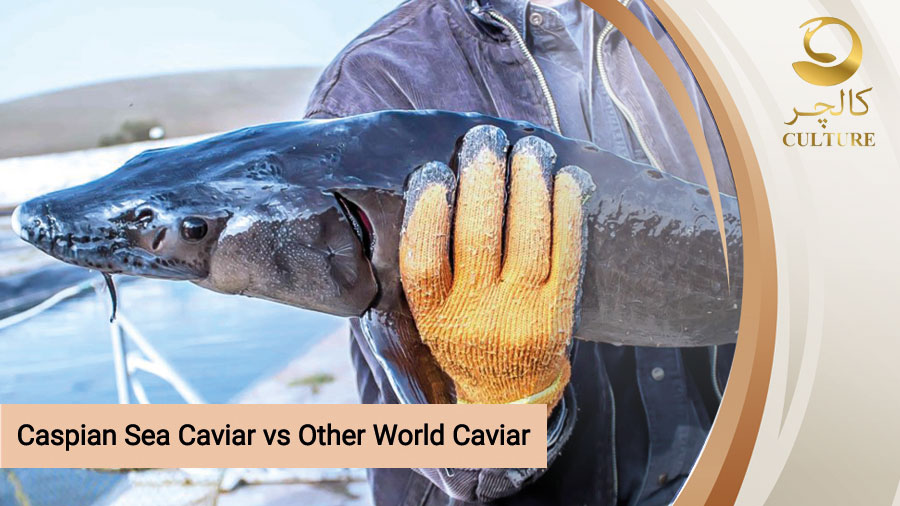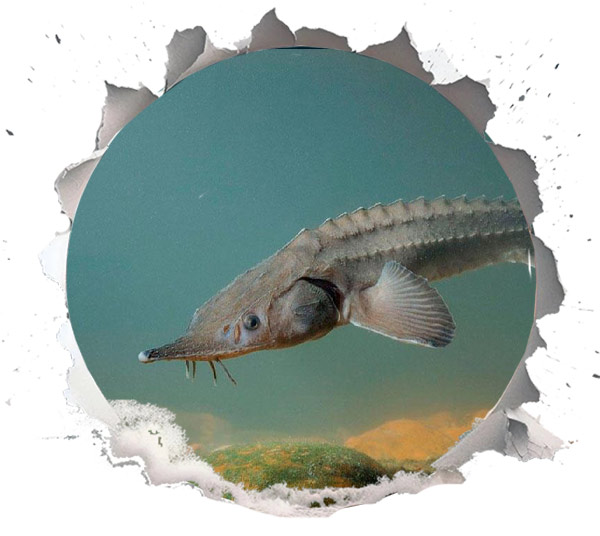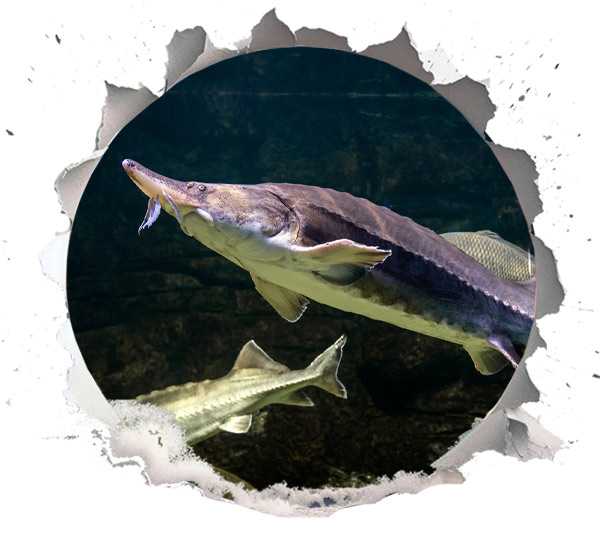Caspian Sea Caviar vs Other World Caviar – What is the Difference?

Caviar has always been seen as the ultimate fancy food—think of it as the star of the gourmet world. But while many of us picture caviar as just fish eggs, there’s a whole range of varieties out there, each with its own unique traits, flavours, and origins. Among these, Caspian Sea caviar really takes the biscuit. In this article, we’ll explore the differences between Caspian Sea caviar and caviar from other parts of the globe, looking at aspects like taste, quality, sustainability, and price.
What Exactly is Caviar?
Before we delve into the nitty-gritty of Caspian Sea caviar, let’s clarify what caviar actually is. Caviar is the salty roe (or eggs) from certain fish, predominantly sturgeon. People often mix up “caviar” with “roe,” but not all roe is caviar. The real deal comes from sturgeon and includes varieties such as Beluga, Ossetra, and Sevruga.
The Caspian Sea: Caviar Central

The Caspian Sea, which borders five countries—Russia, Kazakhstan, Turkmenistan, Iran, and Azerbaijan—is renowned for being the source of the finest caviar in the world. This region has gained a reputation for producing high-quality sturgeon roe, thanks to its unique environment and the myriad sturgeon species that call it home.
Types of Caspian Sea Caviar
- Beluga Caviar: This is the big cheese of caviar, known for its large, soft eggs and luxurious, buttery flavour. It comes from the Beluga sturgeon, which takes a staggering 15 years to mature. Due to its rarity and declining numbers, Beluga caviar is subject to strict regulations and tends to be quite pricey.
- Ossetra Caviar: Ossetra caviar is smaller than Beluga and offers a nutty, complex taste. It’s harvested from the Ossetra sturgeon and can vary in shades from golden to brown. Ossetra is a favourite for its unique flavour.
- Sevruga Caviar: The smallest of the trio, Sevruga caviar is renowned for its bold flavour. The eggs are typically grey and have a strong, briny kick, making them popular among caviar aficionados.
How Does Caspian Sea Caviar Compare to Others?

While Caspian Sea caviar is often at the top of everyone’s list, caviar is also produced in other areas like North America, Europe, and Asia. Let’s see how they compare.
North American Caviar
Recently, North America has entered the caviar scene, placing a strong emphasis on sustainability. Many farms in the US and Canada are employing aquaculture methods to rear sturgeon and produce caviar.
- American Paddlefish Caviar: This variety is produced from paddlefish and is generally more reasonably priced than Caspian options. It boasts a mild, buttery flavour and medium-sized grey to black eggs.
- White Sturgeon Caviar: Sourced from the White sturgeon, this caviar is gaining popularity for its rich, nutty flavour and firm texture. Furthermore, White sturgeon can mature in approximately 25 to 30 years.
European Caviar
Europe also boasts a rich caviar history, particularly in countries such as Italy and France.
- Italian Caviar: Italy has established a significant reputation in the caviar world, producing it from various sturgeon species. The Italian caviar industry places a strong emphasis on sustainability and offers a wide array of flavours and textures.
- French Caviar: The French caviar scene is flourishing as well, with farms. French caviar often emphasises traditional techniques and quality, resulting in unique flavours that reflect the local environment.
Taste and Texture: What to Expect
When it comes to taste and texture, Caspian Sea caviar is often lauded for its depth and richness. For instance, Beluga caviar’s large, soft eggs provide a unique mouthfeel, while Ossetra’s nutty notes and Sevruga’s briny punch create a delightful flavour combination.
In contrast, North American caviar tends to be milder, which some individuals might prefer. As for European caviars, the flavours can vary widely depending on the farm and species, with some being bold and others more subtle and delicate.
Sustainability: A Key Consideration
With caviar’s popularity on the rise, sustainability has become a hot topic. Overfishing and habitat loss have put wild sturgeon populations at risk, prompting international efforts to protect them. Caspian Sea caviar, especially Beluga, faces strict regulations due to overfishing. Many countries have banned wild-caught Beluga caviar, resulting in higher prices and a focus on responsible farming practices.
In contrast, Caspian sea farms are increasingly adopting aquaculture methods, allowing for sustainable production without putting wild sturgeon at risk. By choosing to buy Caspian caviar from reputable sources, you can enjoy this luxury while supporting conservation efforts.
Pricing: What to Expect
Caviar is often seen as a luxury item, and prices can vary widely based on the type and source. Caspian Sea caviar, particularly Beluga, can cost anywhere from £200 to £500 per ounce, depending on market conditions.
Wrapping It Up
Caviar is a culinary gem that comes in many varieties, each with its own unique flavours and textures. While Caspian Sea caviar remains the most sought-after, Farmed caviar from Caspian sea is producing high-quality, sustainable alternatives worth trying. Whether you fancy the luxurious richness of Beluga, the nutty complexity of Ossetra, or the milder notes of American caviar, there’s a whole world of flavours out there.
So, next time you treat yourself to a spoonful of caviar, take a moment to appreciate the journey of those tiny eggs—where they come from, how they’re produced, and the unique flavours they bring. Caviar isn’t just a gourmet treat; it’s a reflection of the environment and practices that put it on your plate. Whether you’re after the best caviar in the world or exploring the nuances of wild caviar, the experience is sure to be memorable.


Ever ever for ever
Iranian Caviar
The best of the best 👌 👍 😍